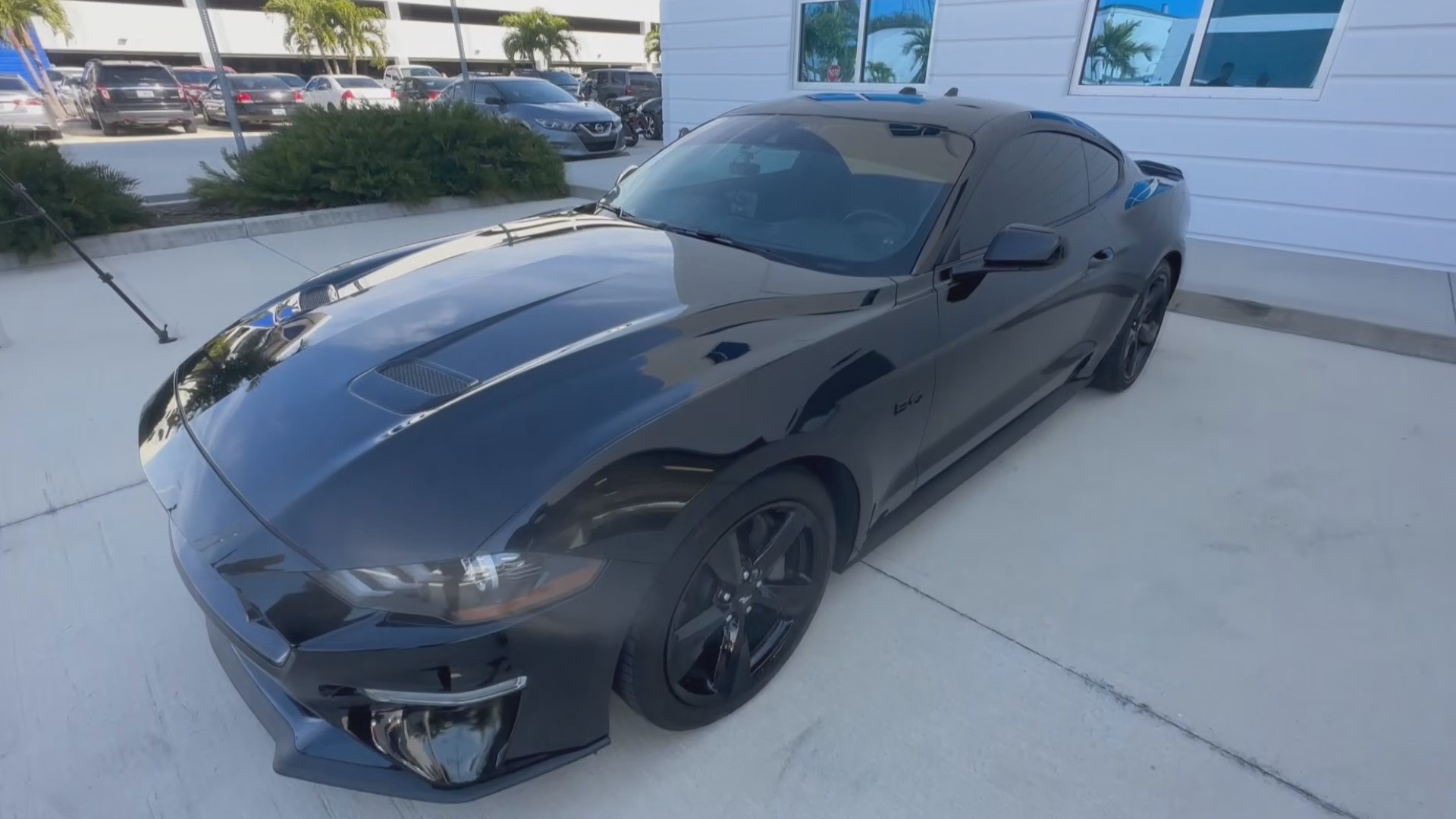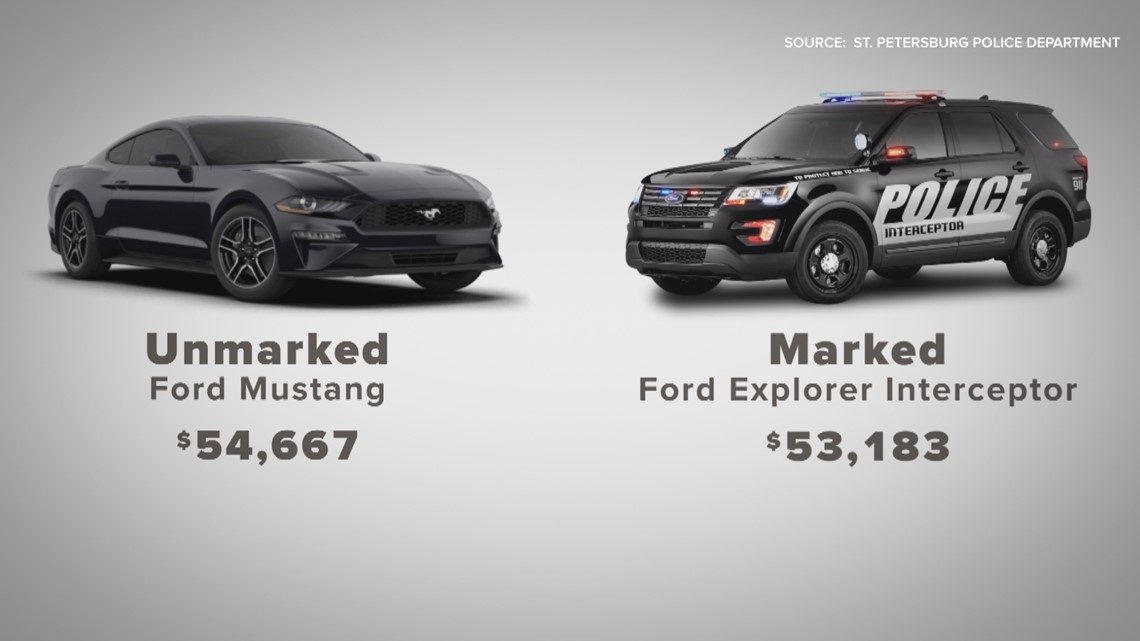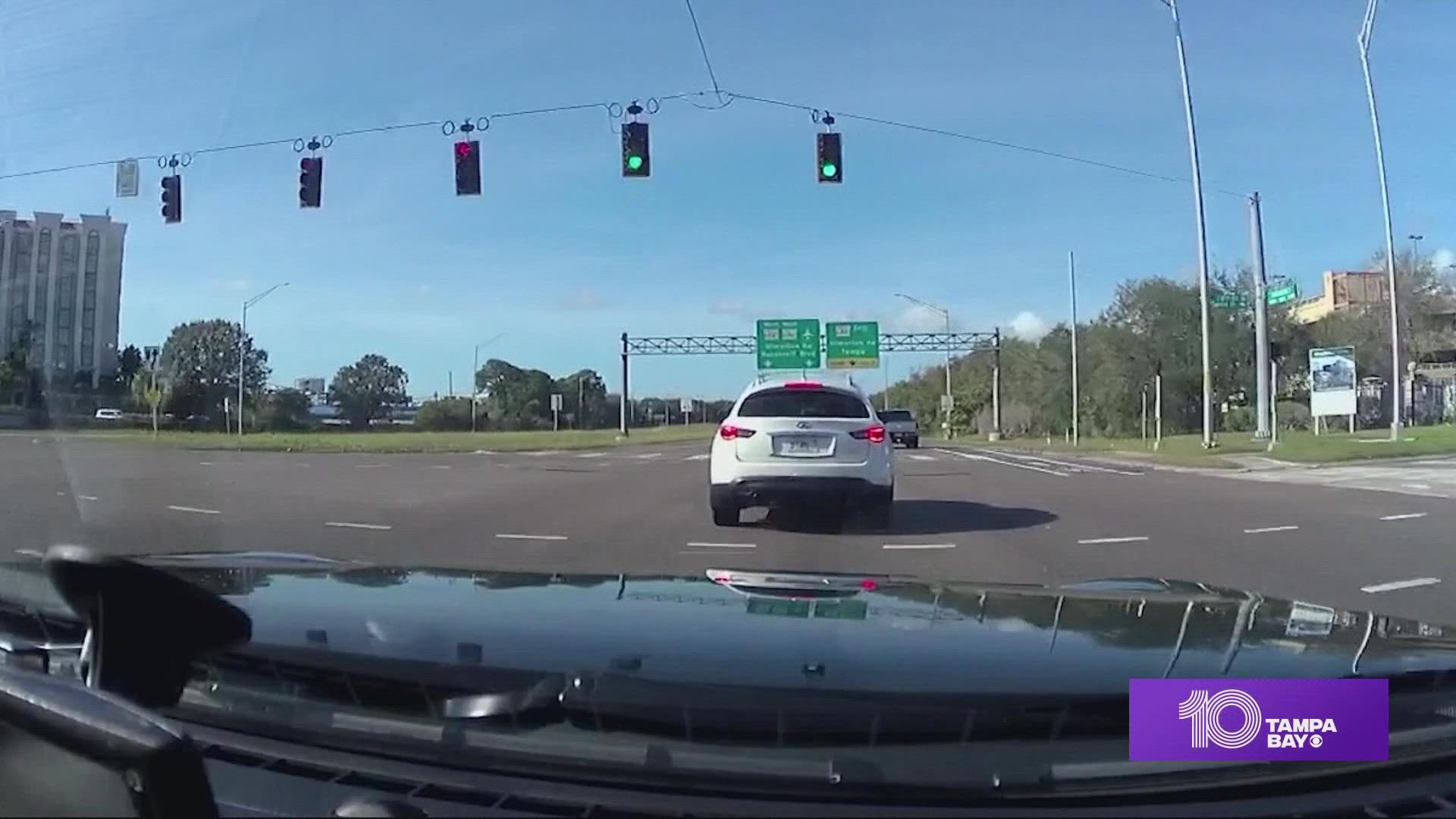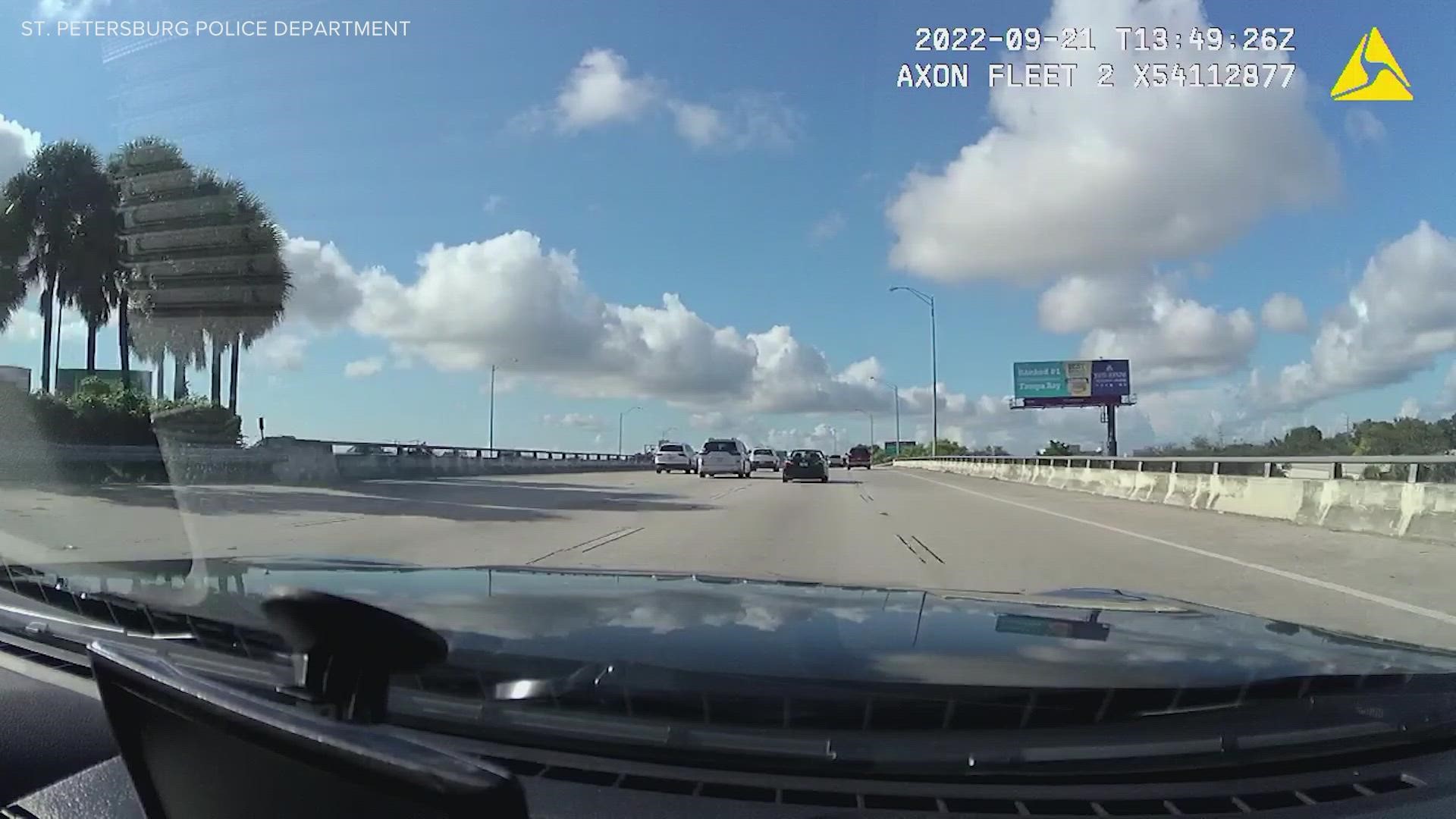More Florida agencies using unmarked sports cars to catch unsuspecting speeders
As instances of aggressive driving increase, local agencies say they need stealthier ways to catch extreme violators. Many are turning to unmarked muscle cars.

One afternoon in late September as Officer David Garrett drove south on Interstate 275 toward downtown St. Petersburg, a driver in a black convertible BMW cut across two lanes of the highway.
Passing the 5th Avenue North exit, the driver changed lanes, tailgating the vehicle ahead of them, and then changed lanes, again.
“There he goes again, no signal,” Garrett can be heard saying as the audio on his dash camera engaged. He, too, changed lanes, speeding up to follow.
Approaching the I-375 interchange, the driver in the BMW continued to weave in and out of traffic, seemingly unaware a police officer was following, reaching speeds approaching 100 mph.
“I’m doing 95 pacing him,” the officer announced as he turned on his police lights and siren. The driver quickly pulled to the shoulder and stopped.
But what appeared to be a typical traffic stop from Garrett’s view was likely anything but from the BMW driver’s perspective.
That’s because Garrett was driving one of the newest additions in the St. Petersburg Police Department’s fleet: an unmarked Ford Mustang GT.
More muscle Local agencies say the unmarked cars are a stealthier way to catch reckless drivers.
As instances of aggressive driving increase, local agencies say they need stealthier ways to catch extreme violators. Many in the Tampa Bay area and across the state of Florida are turning to unmarked muscle cars.
“We're going after people doing egregious speeds [and] driving very reckless,” said Sergeant Michael Schade with the St. Petersburg Police Department, pointing to notorious areas like Gandy and Roosevelt boulevards and U.S. Highway 19.
“They’re driving thinking an officer isn’t in the area,” Schade said. “By having a vehicle like this, we're able to curb that type of activity.”
Right now, the Ford Mustang is the only unmarked muscle car in SPPD’s fleet. But Schade said the department is looking at adding more in the future.
Across the Bay, the Hillsborough County Sheriff’s Office has about a dozen unmarked V6-powered Dodge Challengers in varying colors. The agency started adding muscle cars to its traffic unit in 2019, first with unmarked Chevrolet Camaros.
“We went a little outside the box,” said Corporal Donald Rizer with the Hillsborough County Sheriff’s Office traffic unit.
“This helps us be in a situation where we can witness things when you're like, ‘where's the cop when you need one,’ well I might be right beside you.”
But for his team of deputies, Rizer says, the primary goal is education and not writing citations.
“Everyone who gets a ticket deserves a ticket,” he said. “But if you don't deserve a ticket and you can use the education—because the average public, they're never even going to come in contact with law enforcement—that's my opportunity to break that ice.”
Are they more effective? The cars are raising concerns about cop impersonators and community trust in police.
Compared to some states, like California, law enforcement in Florida face very few restrictions on when and where unmarked vehicles can be used for traffic enforcement.
While the use of unmarked vehicles isn’t new, with more agencies deploying them specifically to catch reckless drivers, research on the effectiveness and impact on public perception remains extremely limited.
At a time when police agencies are working to build more trust in their communities, unmarked cars risk countering that, argues James Wright II, a professor in police-community relations at Florida State University.
“It gives the perception that the community is doing something that is not lawful,” Wright said. “Then it's telling the police officers that they need to be hyper-vigilant when they're in these unmarked cars as well, so I think on both ends it can be scary.”
The increased use of unmarked vehicles by law enforcement, particularly models atypical for traffic stops, has also raised concerns about police impersonators.
Last June, a 26-year-old Tampa man was arrested for impersonating a police officer. A man told 10 Tampa Bay he had his wife and three children in the car when he was stopped by the phony cop who was driving a gray Range Rover with flashing red and blue lights.
An officer, deputy or trooper in an unmarked vehicle conducting a traffic stop will always be in full uniform, the St. Petersburg Police Department, Hillsborough County Sheriff's Office and Florida Highway Patrol told 10 Tampa Bay. In many cases they'll even have extra markings on their uniforms and vehicles are outfitted with several flashing red and blue lights, Rizer said.
Dic Donohue, a retired Boston-area transit officer turned researcher with the RAND Center for Quality Policing, says departments need to make it clear through community outreach if they plan to increasingly utilize unmarked vehicles for regular traffic enforcement and explain what drivers can do if they’re ever in doubt.
“We’ve certainly seen bad actors and folks take advantage,” Donohue said. “Could this cause a secondary issue where somebody flees or doesn't comply with an officer pulling them over because they just don’t know?”
Whether agencies are successfully nabbing more extreme violators than if they’d been in marked cruisers remains unclear.
When 10 Tampa Bay tried finding out if law enforcement in unmarked cars were writing more tickets, or even just initiating more stops than their marked counterparts, we were told by the St. Petersburg Police Department, the Hillsborough County Sheriff’s Office and Florida Highway Patrol that traffic stops and citations were not tracked by the type of vehicle used.
“It's not really a matter of more tickets,” Schade argued. “It's going after a specific type of violator.”
The price of performance Unmarked cars cost departments about the same amount as marked ones.
Some critics have also raised concerns over what these vehicles are costing agencies, but 10 Tampa Bay found the price is comparable to marked cruisers.
Both the St. Pete Police Department and Hillsborough County Sheriff’s Office said they bought their unmarked cars brand new off the lot, and then outfitted them with equipment like lights and computers. The St. Pete Police Department also added cameras and radar equipment to its Mustang.
A marked Ford Explorer Interceptor used for traffic enforcement set the St. Pete Police Department back $53,183, compared to $54,667 for the Ford Mustang GT.


Similarly, the Hillsborough County Sheriff's Office says the agency's standard-marked Chevrolet Tahoes run around $36,000 compared to $37,000 for the Challengers.
Rizer said the sheriff's office opted for V6 models over Hemi-powered V8s because they’re less expensive and more fuel efficient, but still powerful enough.
Rizer said he can’t put a price on what he believes these cars are worth to the community.
“Think about your family and the way you want people to drive around you,” Rizer said. “We're out here in these vehicles, and they're going to stop driving the way they drive because somebody may be injured or killed.”



